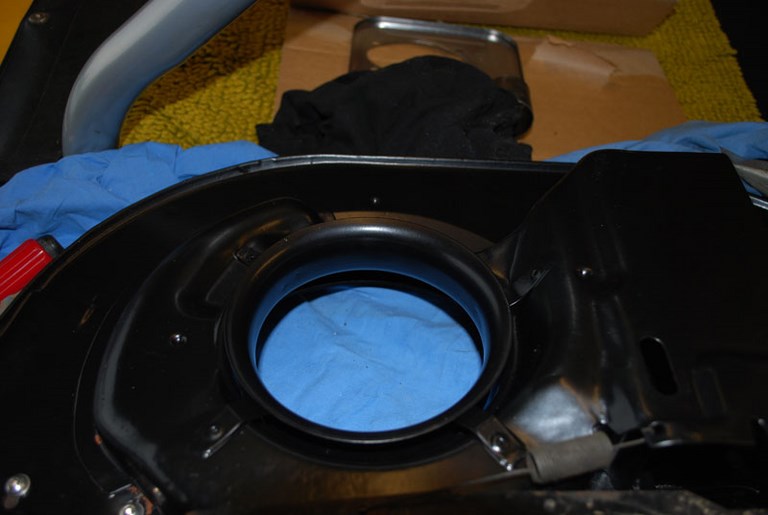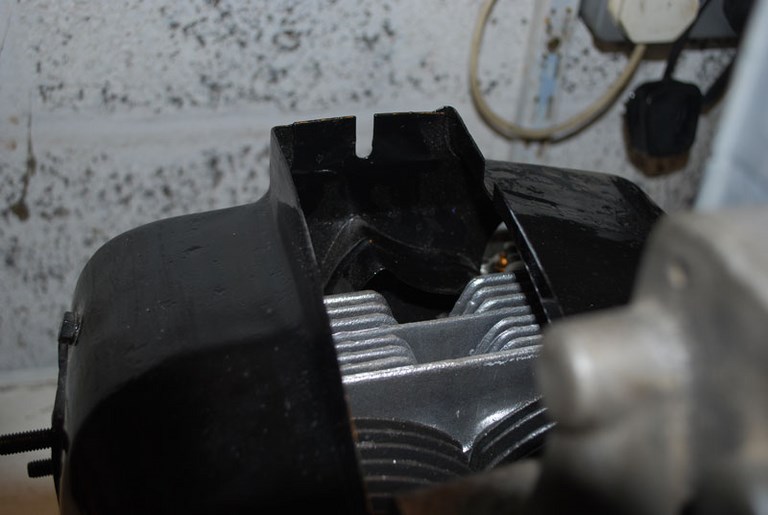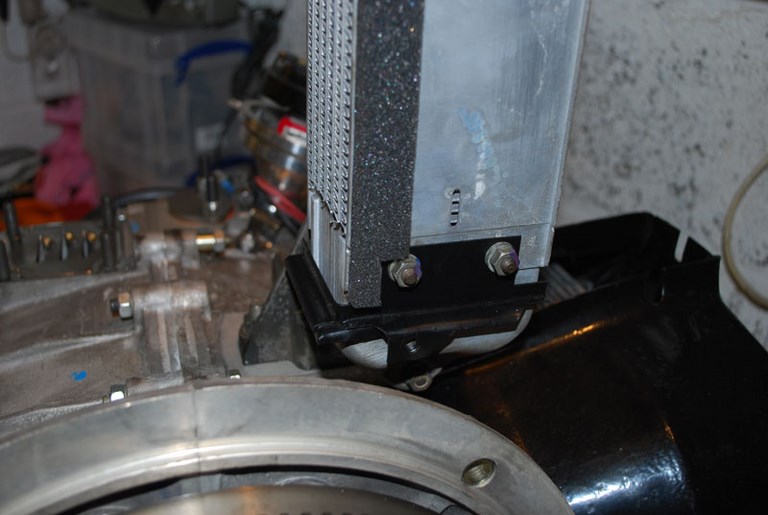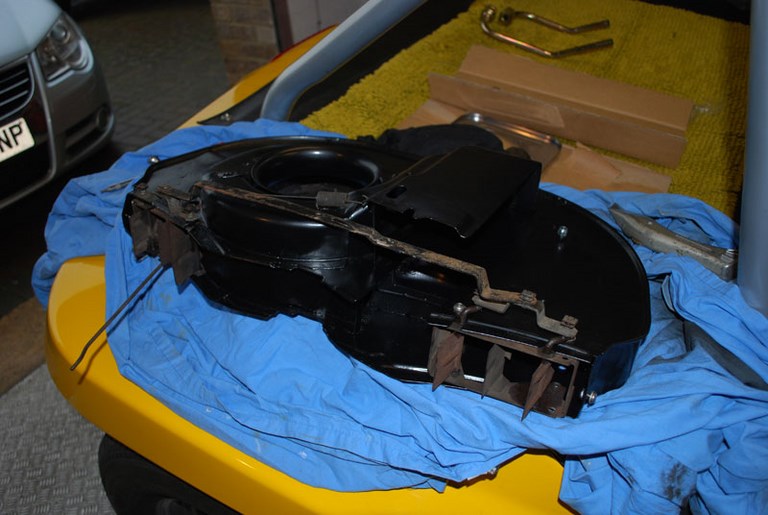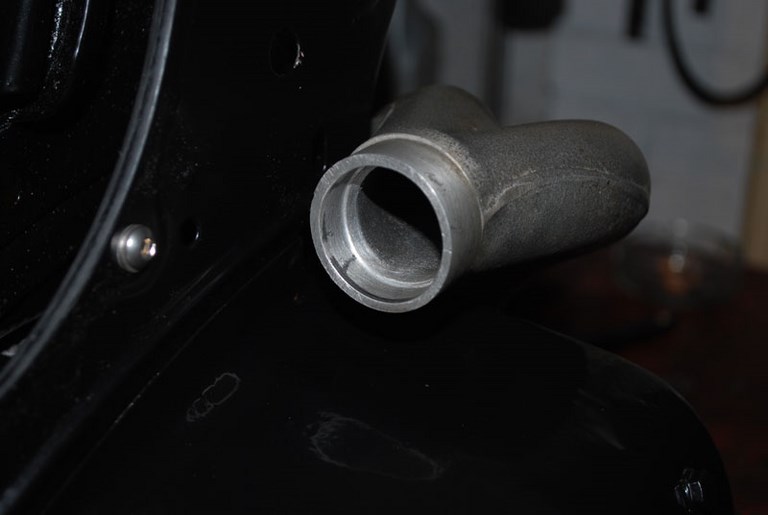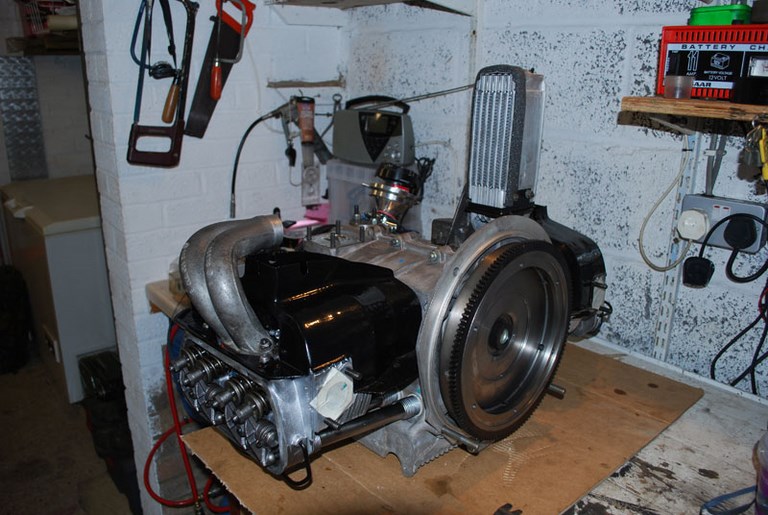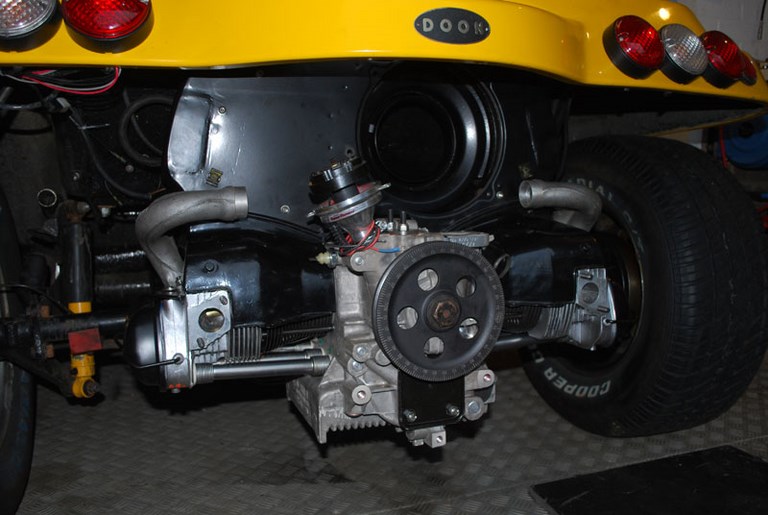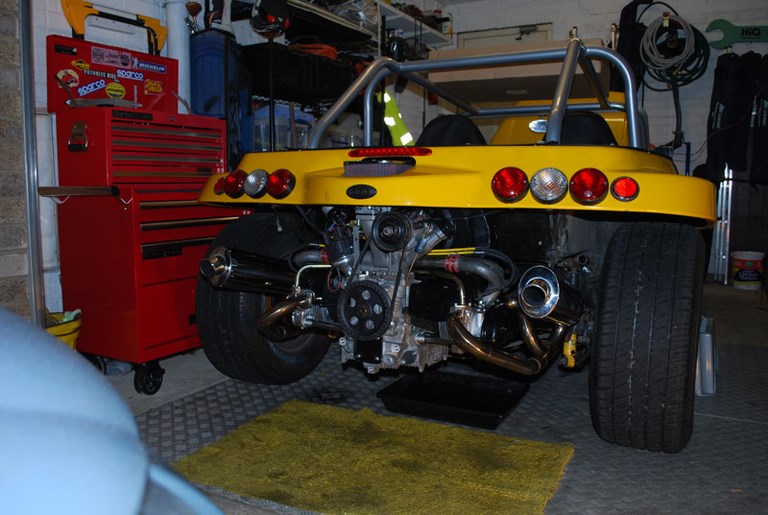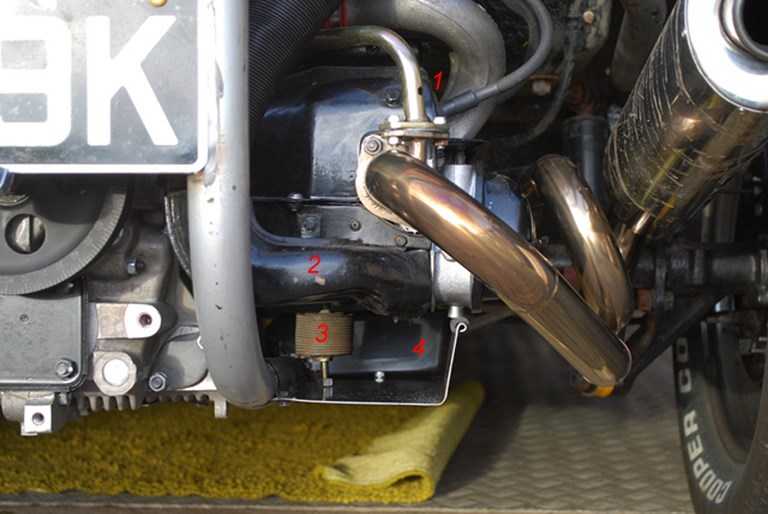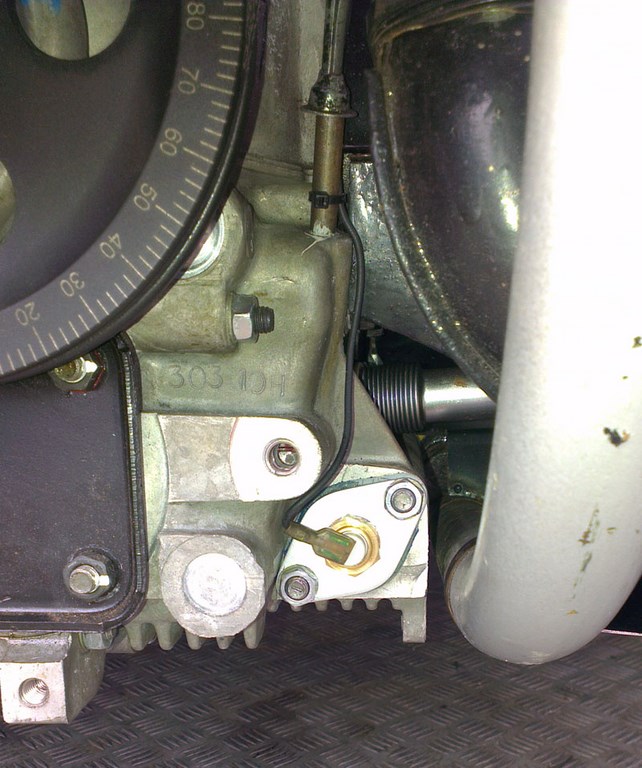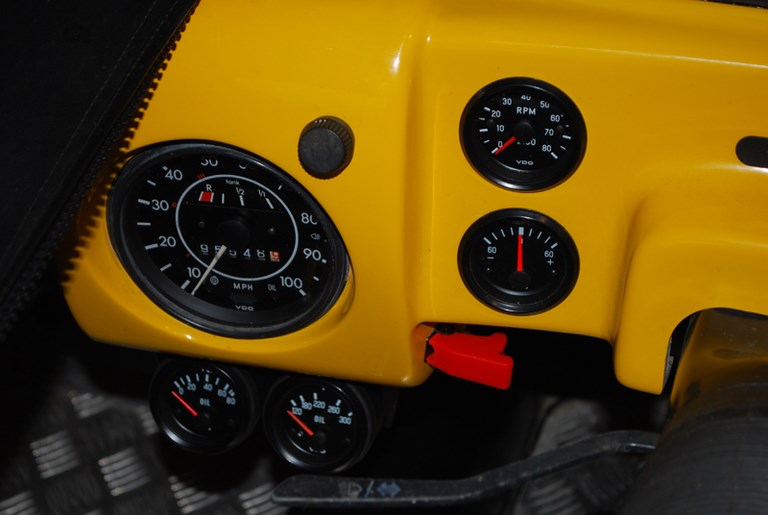Engine Replacement
My original 1300cc engine that was fitted with 1600cc pistons, barrels and cylinder heads developed a large oil leak from the flywheel oil seal in October 2012 and had a large amount of end float on the crankshaft, as the engine had done 95000 miles since 1972 without a bottom end rebuild it was time to replace it.
I decided to get a VW Heritage 1600cc engine, my tinware was blasted and powder coated and improvements made to the manifold / carburettor heating for better cold / winter running.
My solutions to getting as much heat in to the manifold as possible using VW original design ideas and parts:
1: 10mm hole drilled in pipe from manifold and blanked off heat riser from No 2 cylinder, so only heating from No 4 cylinder heat riser.
2: Original VW Beetle hot air feed to back of K&N air filter, also crankcase vent feeding in to base of filter.
3: Original thermostat and flaps fitted to allow quicker engine warm up, the thermostat only works with the full tinware fitted.
2: Original VW Beetle hot air feed to back of K&N air filter, also crankcase vent feeding in to base of filter.
3: Original thermostat and flaps fitted to allow quicker engine warm up, the thermostat only works with the full tinware fitted.
4: Full custom made tinware under cylinders on both sides of engine fixed to engine cage to replicate the original set up. This ensures the cylinder barrels and heads heat up correctly and evenly top to bottom.
Metal gaskets used between cylinder heads and manifold end pipes to allow heat to rise into the castings.
Metal gaskets used between cylinder heads and manifold end pipes to allow heat to rise into the castings.
